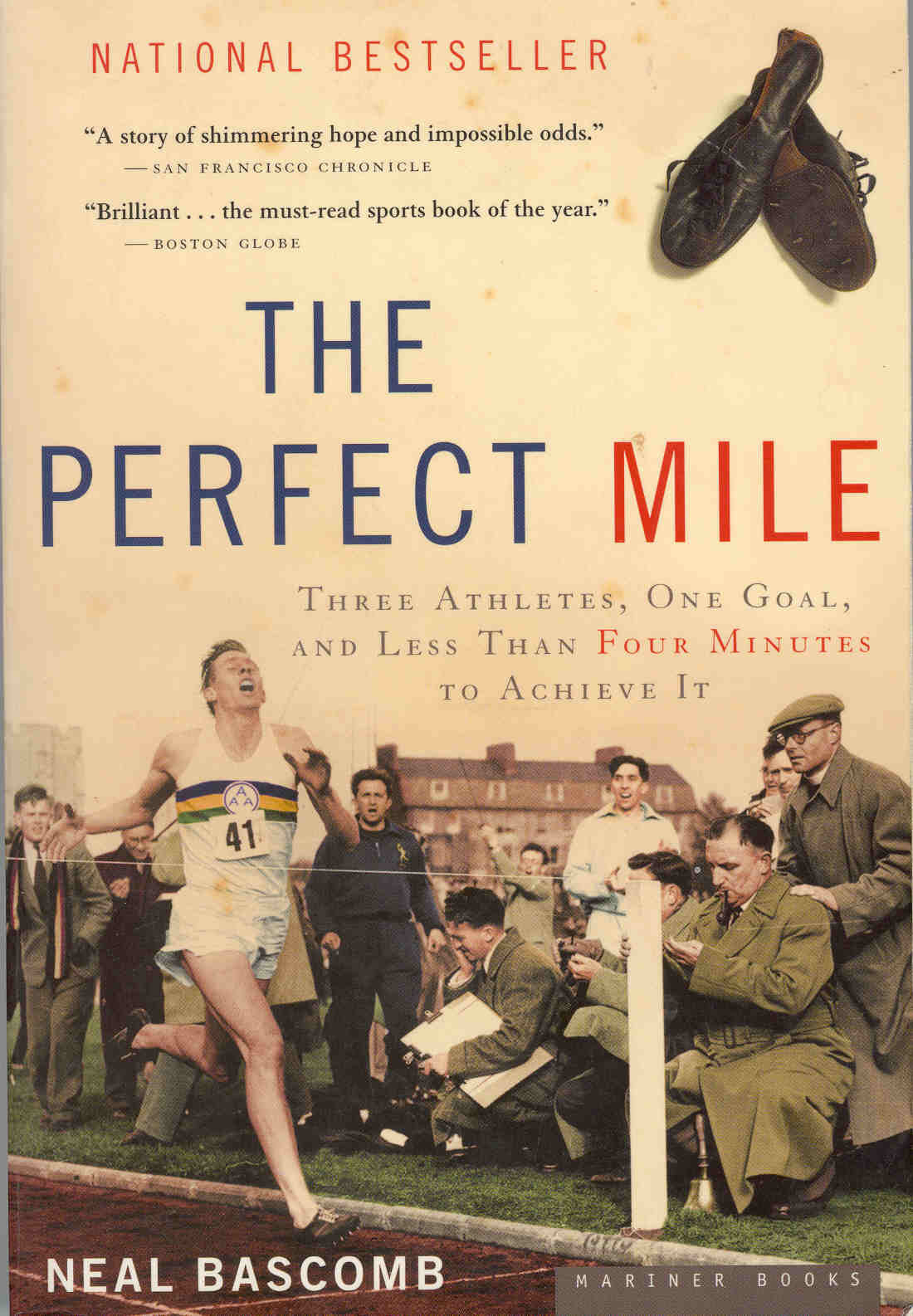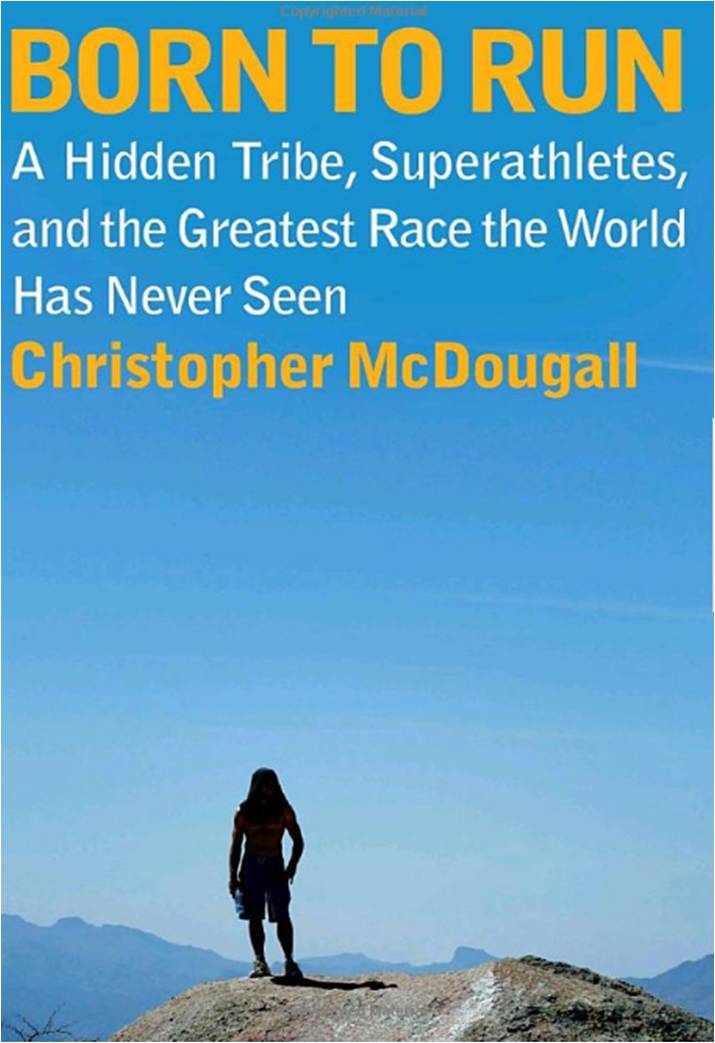| Week/Source |
Topic |
Location |
| Week
1: The history of the 4-min mile; Anthropology of running |
|

|
Bascomb N. The Perfect
Mile. 2005, Mariner Books (Houghton Mifflin Company), New York City. ISBN: 0-618-56209-05 ($14.00) |
Book |
|

|
McDougall C. Born to Run: A
hidden tribe, superathletes, and the greatest race the world has never
seen. Random House Inc, New York, 2009. ISBN: 978-0-307-26630-9 (Amazon
price = $15.00) |
Book |
| Week
2: Laboratory 1:Ergometry, Treadmill Walking and Running, Protocol
Development |
| Yoon et al. |
VO2max, Protocol
Duration, and the VO2 Plateau. Med Sci Sports Exerc.
2007;39(7):1186-1192. |
pdf |
| Mallory L et al. |
Influence of peak VO2
and muscle fiber type on the efficiency of moderate exercise. Med
Sci Sports Exerc. 2002;34(8):1279-1287. |
pdf |
| Week
3: Laboratory 2:Wingate Testing |
| Jastrzebski Z. |
Selected aspects of the
assessment of anaerobic capacity by applying the Wingate Test. Biol
Sport 12(3):131-135, 1995. |
pdf |
| Franklin KL et al. |
Davies B. Accurate
assessment of work done and power during a Wingate anaerobic test. Appl
Physiol Nutr Metab. 2007 Apr;32(2):225-32. |
pdf |
| Smith JC et al. |
Contribution of energy
systems during a Wingate power test. Br
J Sports Med. 25(4):196-9, 1991. |
pdf |
| Week
4: Laboratory 3:Vertical Jump and Margaria Power Test |
| Hetzler RK, et al. |
Development of
a modified Margaria-Kalamen anaerobic power test for American football
athletes. J Strength Cond Res. 2010 Apr;24(4):978-84. |
pdf |
| Huskey T, et al. |
Factors affecting anaerobic power output in the
Margaria-Kalamen test. Ergonomics. 1989 Aug;32(8):959-65. (Abstract only) |
pdf |
| Sayers SP et al. |
Cross-validation
of three jump power equations. Med Sci Sports Exerc. 1999 Apr;31(4):572-7.
|
text
figures |
| Week
5: Laboratory 4:Earlobe Blood Lactates |
| Robergs RA. et al. |
Biochemistry of exercise-induced metabolic acidosis. Am
J Physiol Regul Integr Comp Physiol. 2004 Sep;287(3):R502-16. |
pdf |
| Thomas C, et al. |
Monocarboxylate transporters, blood lactate removal
after supramaximal exercise, and fatigue indexes in humans. J Appl
Physiol. 2005 Mar;98(3):804-9. |
pdf |
| Juel C. |
Current aspects of lactate exchange: lactate/H+
transport in human skeletal muscle. Eur J Appl Physiol. 2001
Nov;86(1):12-6. |
pdf |
| Chmura J, et al. |
Parallel changes in the onset of blood lactate
accumulation (OBLA) and threshold of psychomotor performance deterioration
during incremental exercise after training in athletes. Int J
Psychophysiol. 2010 Mar;75(3):287-90. |
pdf |
| Week
6: Laboratory 5:Resting Metabolic Rate |
| van
Pelt RE, et al. |
Age-related decline in RMR
in physically active men: relation to exercise volume and energy intake.
Am J Physiol Endocrinol Metab. 2001 Sep;281(3):E633-9. |
pdf |
| Gilliat-Wimberly
M, et al. |
EffEffects
of habitual physical activity on the resting metabolic rates and body
compositions of women aged 35 to 50 years. J Am Diet Assoc.
2001 Oct;101(10):1181-8. |
pdf |
| Lee MG, et al. |
Resting metabolic rate
after endurance exercise training. Med Sci Sports Exerc.
2009 Jul;41(7):1444-51. |
pdf |
| Week
10: Laboratory 6:Steady State vs. Non-steady state |
| Carey DG et al. |
Transferability of running
and cycling training zones in triathletes: Implications for steady state
exercise. J Strength Cond Res 23(1):251-258, 2009. |
pdf |
| Week
11: Laboratory 7:VO2max Testing |
| Noakes TD. |
Testing for maximum oxygen
consumption has produced a brainless model of human exercise performance. |
pdf |
| Levine BD. |
VO2max: What dowe know, and
what do we still need to know? |
pdf |
| Noakes TD. |
How did AV Hill understand
the VO2max and the "plateau phenomenon"? Still no clarity? |
pdf |
| Bassett D. & Howley E. |
Limiting factors for
maximum oxygen uptake and determinants of endurance performance. |
pdf |
| Shephard RJ. |
Is it time to retire the
"Central Governor"? |
pdf |
| Caizzo VJ et al. |
A comparison of gas
exchange indices used to detect the anaerobic threshold |
pdf |
| Week
11: Laboratory 8: Spirometry and End-tidal Gas Fractions |
| Kim Prisk G, AR Elliot, JB
West. |
|
pdf |
| Lane R, L Adams, A Guz. |
The effects of hypoxia and
hypercapnia on perceived breathlessness during exercise in humans. J
Physiol 1990;428:579-593. |
pdf |
| Sato F, M Nishimura, T
Igarashi, M Yamamoto, K Miyamoto, Y Kawakami. |
Effects of exercise and CO2
inhalation on intersubject variability and heart rate responses to
progressive hypoxia. Eur Resp J. 1996;9:960-967. |
pdf |
| Whipp BJ, SA Ward. |
Determinants and control of
breathing during muscular exercise. Br J Sports Med 1998;32:199-211. |
pdf |
| Week
13: Laboratory 9: Altitude Chamber and Acute Hypoxia |
| Mollard P et al. |
Determinants of
maximal oxygen uptake in moderate acute hypoxia in endurance athletes.
EurJ Appl Physiol 2007; 100:663-673. |
pdf |
| Favret F, Richalet JP. |
Exercise and Hypoxia: The
role of the autonomic nervous system. Resp Physiol & Neurobiol 2007:
158:280-286. |
pdf |
| Woorons X.. et al. |
Moderate exercise in
hypoxia induces a greater arterial desaturation in trained than untrained
men. Scan J Med Sci Sports 2007; 17:431-436. |
pdf |
| Week
15: Laboratory 10: 1 and 5-RM Strength Testing |
| American College of Sports Medicine. American
College of Sports Medicine position stand. Progression models in
resistance training for healthy adults. Med Sci Sports Exerc. 2009
Mar;41(3):687-708. |
pdf |
| Brechue WF, Mayhew JL. Upper-body work capacity
and 1RM prediction are unaltered by increasing muscular strength in
college football players. J Strength Cond Res. 2009 Dec;23(9):2477-86. |
pdf |
| de Salles BF, Simão R, Miranda F, Novaes Jda S,
Lemos A, Willardson JM. Rest interval between sets in strength training.
Sports Med. 2009;39(9):765-77. |
pdf |
| Mayhew JL, Johnson BD, Lamonte MJ, Lauber D,
Kemmler W. Accuracy of prediction equations for determining one repetition
maximum bench press in women before and after resistance training. J
Strength Cond Res. 2008 Sep;22(5):1570-7. |
pdf |
| Reynolds JM, Gordon TJ, Robergs RA. Prediction of
one repetition maximum strength from multiple repetition maximum testing
and anthropometry. J Strength Cond Res. 2006 Aug;20(3):584-92. |
pdf |